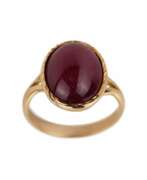Ruby

Ruby
Ruby is a precious gemstone known for its vibrant red color and exceptional hardness. This gemstone has been cherished for centuries by various cultures and civilizations for its beauty and rarity.
In the world of art, ruby holds a special place due to its striking appearance and the symbolism associated with it. Artists and jewelers alike have long admired ruby for its deep, rich hue, which often represents love, passion, and power. Rubies have been used in a variety of artworks, including intricate jewelry pieces, royal regalia, and religious artifacts.
Historically, rubies have been revered in many cultures. In ancient India, rubies were called "ratnaraj," meaning "king of precious stones." They were believed to protect their owners from harm and were often used in the crowns and adornments of royalty. In medieval Europe, rubies were highly prized by the elite, symbolizing wealth and status. They were frequently incorporated into religious artifacts and ceremonial objects, reflecting their perceived divine attributes.
One of the most famous examples of ruby in art is the Timur Ruby, part of the British Crown Jewels. This remarkable gemstone is not actually a ruby but a spinel; however, it showcases the high esteem in which rubies were held. Genuine rubies can be found in renowned museum collections, such as the Smithsonian Institution, which houses some of the world's most exquisite ruby specimens.
For collectors and experts in art and antiques, rubies represent not only a material of exceptional beauty but also a piece of history and cultural significance. Their allure continues to captivate and inspire.
Sign up for updates on new product sales and auction events related to ruby to stay informed about the latest opportunities to acquire these stunning gemstones.
| Country: | Ancient Egypt, Ancient Greece, Ancient Rome, Asia, Europe, India |
|---|---|
| Start of the period: | 400 BC |















